Coal Mine Ridge
Coal Mine Ridge
On Saturday D. and I went to an open space in neighboring Portola Valley called Coal Mine Ridge. There used to be a coal mine there long ago but a huge landslide put it out of production. It never produced much coal anyway. But now there is a network of public trails all through the area, and we decided to go and see what spring wildflowers were in bloom. I took these pics.
While at the Portola Valley library hoping to find a trail map, we see vector control is hot on the job.

At the parking area, a large ceanothus above us is in bloom.

Large Hound's Tongue likes the shady woods, as does Starry False Solomon's Seal.
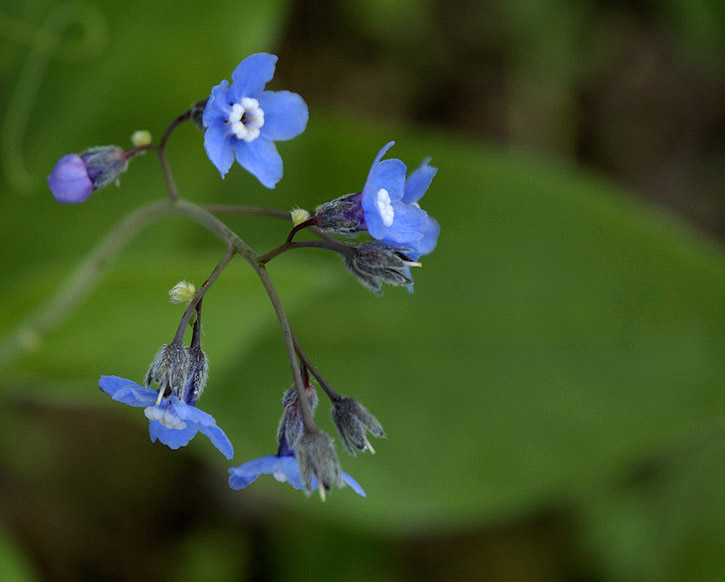

Common Miner's Lettuce is edible, but it doesn't taste like much.

The Giant Trillium blossom hasn't opened yet.

The forest canopy overhead.

Milkmaids, another woodsy plant. It is related to broccoli and cabbage.

Native California Blackberry is found in almost every woods.

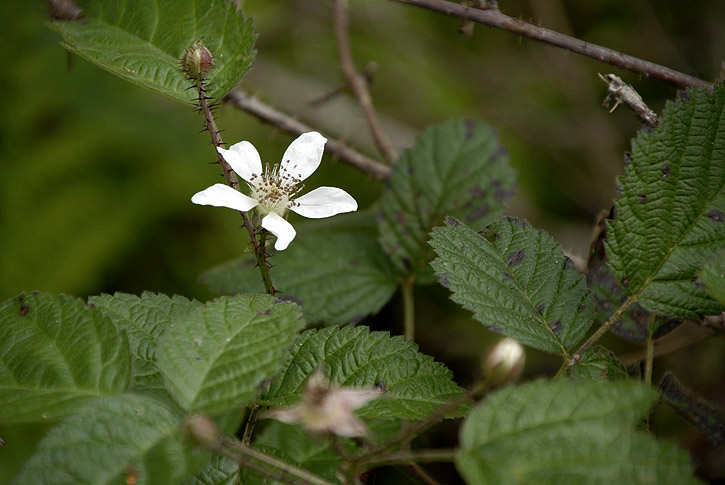
The valley oaks are coming into leaf now.

California manroot is related to the cucumber.

Unlike the more commonly seen Douglas iris, Fernald's iris is yellow instead of blue.


California buttercup.

More Starry False Solomon's Seal.

The Old Spanish Trail.

Common Star Lily.

Some Hound's Tongues have berries already.

Poison Oak can grow in either a shrubby form or a vine form. This vine has found a tree trunk to climb.

Blue-eyed Grass is not a true grass, but instead an iris relative.
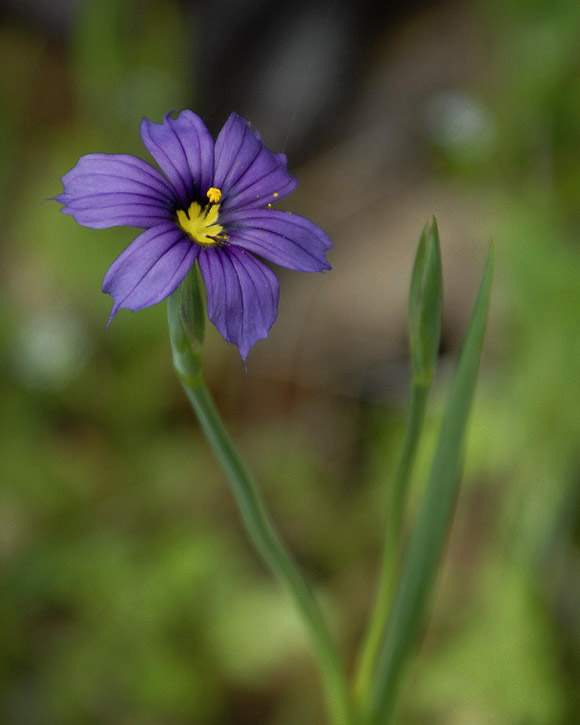
Indian Warrior usually grows parasitically on another plant's roots, but it can also live independently if it cannot find suitable roots to attach to.

A view along the Old Spanish Trail.

There are a lot of Fernald's iris in the woods here.

Tomcat Clover.

Golden Eggs Suncup.

There are few if any fences along the trail. This sign reminds us not to go off the path.

Ookow.

More Indian Warrior.

Another Fernald's iris.

The Old Spanish Trail goes through a meadow along Coal Mine Ridge.
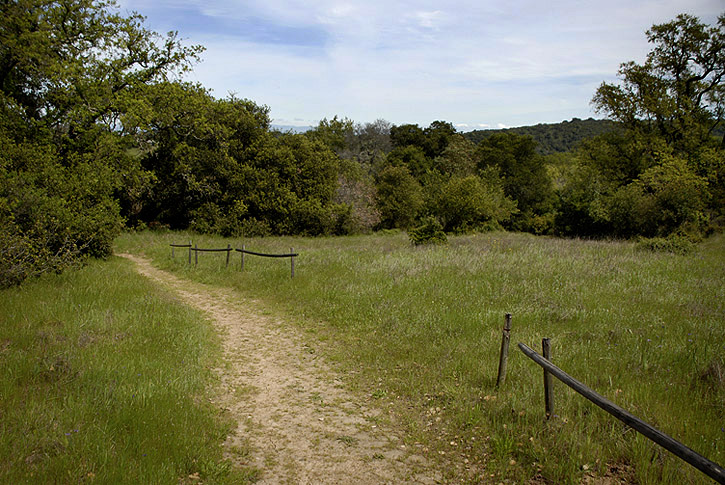
A turkey vulture soars on the thermals overhead.

Looking north from the ridge, Yerba Buena Island and the Bay Bridge are barely visible through the haze.

A trail signpost.

Can you guess the meaning of the horseshoe and footprint?
Looking southwest from the ridge toward the Santa Cruz Mountains.

The trail continues on.


More blue-eyed grass.
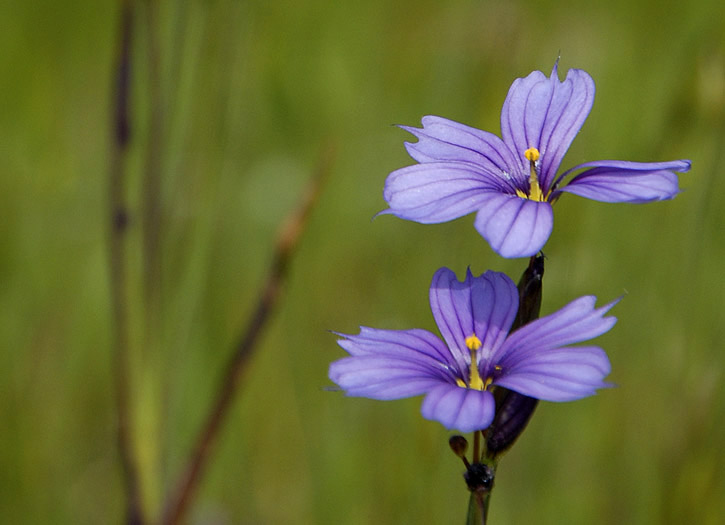
This lizard is well camouflaged.

This is how old, dried-out turkey tail fungi look when the winter rains cease.
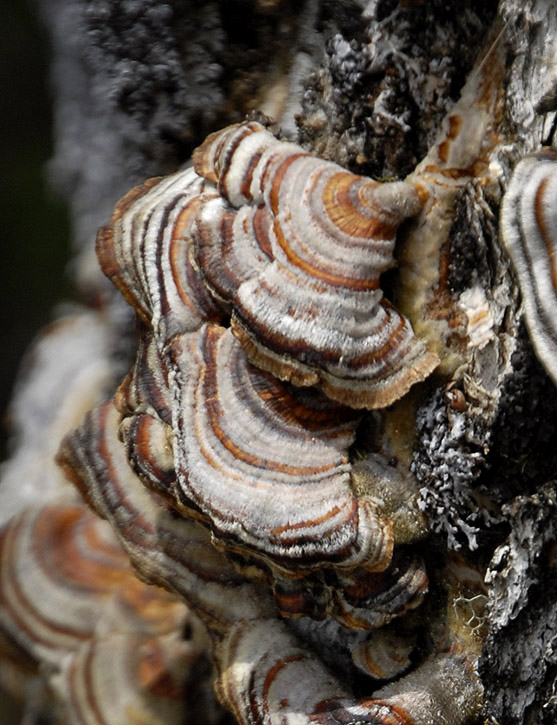


BFF!

Shepherd's Needle, a naturalized non-native.

The oak canopy overhead.

Lost sunglasses perched on a trailside branch wait to be retrieved, or adopted.

Looking northeast, we see Stanford's Big Dish radiotelescope just in front of the Dumbarton Bridge, and Mt. Diablo on the horizon.

At the junction with the Toyon Trail, this poison oak vine swathes this tree trunk like a scarf.

A spider on the trail.

These fungi look like sloppy stacks of flapjacks.

This fuzzy little critter scurrying across the trail looks like a huge hairy ant, thus its name Velvet Ant, but it is really a wasp. Another name for velvet ant is "cow killer" because its sting packs a powerful punch. This is a wingless female.

A view of Windy Hill from the Toyon Trail.

Lupine.

Pinpoint Clover.

Ookow: popular with little bugs.

This lizard is regrowing its tail. It probably fell off in a tussle with a predator, allowing the lizard to escape.

Another look at Windy Hill as we descend the Toyon Trail.

California Aster.
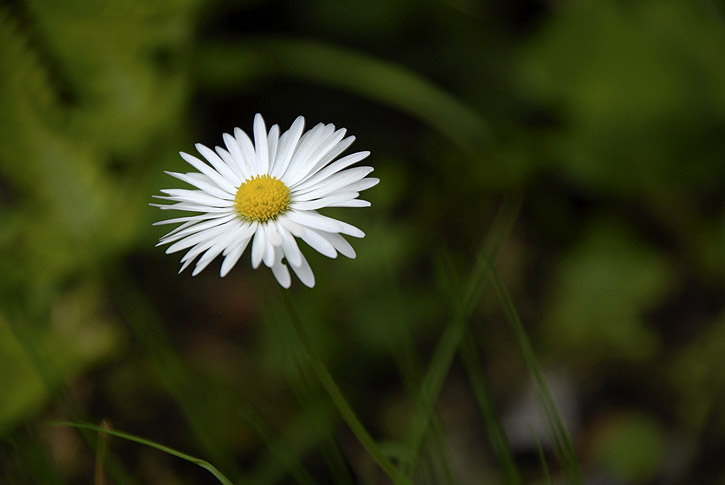
This section of the Toyon Trail is lined with forget-me-nots.

Bracken unfurls its fronds by a moist gulch.

Hill Star, in the Saxifrage family.

Western Starflower.

.
On Saturday D. and I went to an open space in neighboring Portola Valley called Coal Mine Ridge. There used to be a coal mine there long ago but a huge landslide put it out of production. It never produced much coal anyway. But now there is a network of public trails all through the area, and we decided to go and see what spring wildflowers were in bloom. I took these pics.
While at the Portola Valley library hoping to find a trail map, we see vector control is hot on the job.

At the parking area, a large ceanothus above us is in bloom.

Large Hound's Tongue likes the shady woods, as does Starry False Solomon's Seal.


Common Miner's Lettuce is edible, but it doesn't taste like much.

The Giant Trillium blossom hasn't opened yet.

The forest canopy overhead.

Milkmaids, another woodsy plant. It is related to broccoli and cabbage.

Native California Blackberry is found in almost every woods.


The valley oaks are coming into leaf now.

California manroot is related to the cucumber.

Unlike the more commonly seen Douglas iris, Fernald's iris is yellow instead of blue.


California buttercup.

More Starry False Solomon's Seal.

The Old Spanish Trail.

Common Star Lily.

Some Hound's Tongues have berries already.

Poison Oak can grow in either a shrubby form or a vine form. This vine has found a tree trunk to climb.

Blue-eyed Grass is not a true grass, but instead an iris relative.

Indian Warrior usually grows parasitically on another plant's roots, but it can also live independently if it cannot find suitable roots to attach to.

A view along the Old Spanish Trail.

There are a lot of Fernald's iris in the woods here.

Tomcat Clover.

Golden Eggs Suncup.

There are few if any fences along the trail. This sign reminds us not to go off the path.

Ookow.

More Indian Warrior.

Another Fernald's iris.

The Old Spanish Trail goes through a meadow along Coal Mine Ridge.

A turkey vulture soars on the thermals overhead.

Looking north from the ridge, Yerba Buena Island and the Bay Bridge are barely visible through the haze.

A trail signpost.

Can you guess the meaning of the horseshoe and footprint?
Looking southwest from the ridge toward the Santa Cruz Mountains.

The trail continues on.


More blue-eyed grass.

This lizard is well camouflaged.

This is how old, dried-out turkey tail fungi look when the winter rains cease.



BFF!


Shepherd's Needle, a naturalized non-native.

The oak canopy overhead.

Lost sunglasses perched on a trailside branch wait to be retrieved, or adopted.

Looking northeast, we see Stanford's Big Dish radiotelescope just in front of the Dumbarton Bridge, and Mt. Diablo on the horizon.

At the junction with the Toyon Trail, this poison oak vine swathes this tree trunk like a scarf.

A spider on the trail.

These fungi look like sloppy stacks of flapjacks.

This fuzzy little critter scurrying across the trail looks like a huge hairy ant, thus its name Velvet Ant, but it is really a wasp. Another name for velvet ant is "cow killer" because its sting packs a powerful punch. This is a wingless female.

A view of Windy Hill from the Toyon Trail.

Lupine.

Pinpoint Clover.

Ookow: popular with little bugs.

This lizard is regrowing its tail. It probably fell off in a tussle with a predator, allowing the lizard to escape.

Another look at Windy Hill as we descend the Toyon Trail.

California Aster.

This section of the Toyon Trail is lined with forget-me-nots.

Bracken unfurls its fronds by a moist gulch.

Hill Star, in the Saxifrage family.

Western Starflower.

.